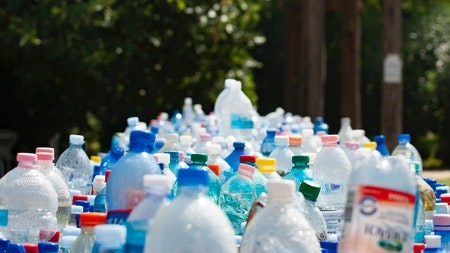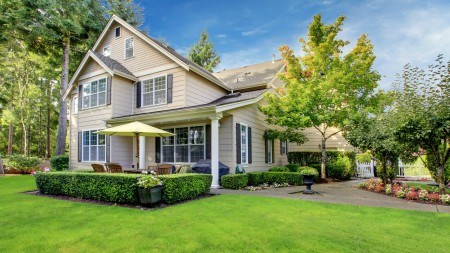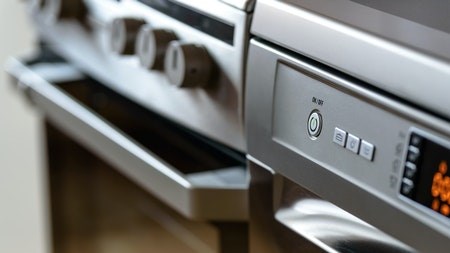Smart ways to reduce energy usage – and bring down your bill
With yet another increase in the cost of electricity set to squeeze consumers even further and our environmental impact increasing exponentially, we all need to start implementing overall energy-savings programmes in our homes as even the smallest measures add up to make a difference.
So says Chris Cilliers, CEO and Principal of Lew Geffen Sotheby’s International Realty in the Winelands: “There are many resourceful, savvy ways in which to save electricity that don’t cost a cent and, with those that require you to open your wallet, you can start by implementing the strategies that will give you the most bang for your buck.
“As more money becomes available, steadily add the other items on your list and in a relatively short time, you will have greatly reduced energy costs, reduced your home’s environmental footprint and improved the value of your home.”
She advises that a good place to start is with the main energy guzzler in your home.
Temperature control
Cilliers says: “The main factor in maintaining a comfortable temperature is having a number of different components in the home that all contribute to a secure building envelope.
“And most are actually simpler and more cost effective than one would think.”
Seal all cracks and crevices from inside your home’s building envelope as well as from the outside. Use expandable foam-sealant products around doors and windows and then finish off with the best-quality caulking you can find. This will provide continuity between indoor and outdoor sealing and will help to improve envelope performance beyond what you may think is possible.
Install ceiling fans to reduce the need for heating and air conditioning, preferably one with a reverse setting. By reversing your fan blades to rotate clockwise you draw down the risen heat from the ceiling and prevent it from dissipating through the roof or walls.
Cover your windows with blinds or curtains which can be a simple and effective way to insulate your home from the cold in winter and the heat in summer. Choose tightly woven cotton or natural fibres like muslin, and hang as close to the window as possible.
Install additional insulation in the attic if you have a pitched roof and consider installing insulation in the rafters instead of ceiling joists. Creating a semi-conditioned space will greatly improve the energy performance of your home.
Ensure your fireplace is efficient as, although wood-burning fireplaces can warm up a room, they can also rob a house of heat by letting warmth escape through the chimney when not in use. And an open fireplace is like keeping a window open in the winter, so it’s wise to consider installing glass doors and a well-fitted cover.
Utilize landscape elements like deciduous trees and plants for shading. Selecting proper vegetation for shading will permit the sun to shine through in the winter, helping to heat the home, yet will shade the home during summer months when unwanted heat may be introduced into the building through windows.
Hot water
“Geysers use a lot of energy and can account for almost half of your bill,” says Cilliers, “but there are a number of ways in which to save energy in this area.”
Lower the thermostat on your geyser to between 45 and 55 degrees; Wrap your water heater in an insulating blanket; Use a programmable thermostat to turn the temp lower while you sleep or work can decrease your energy consumption up to 25% without your needing to remember; Insulate pipes - heat can be lost to cold pipes, so wrap them well and save energy.
Energy-efficient lighting is an important component as light fixtures generate heat as well as light and switching to energy-efficient lighting is one of the fastest ways to cut your energy bills. The most popular light bulbs available are halogen incandescents, compact fluorescent lamps (CFLs), and light-emitting diodes (LEDs).
Controls such as timers and photocells save electricity by turning lights off when not in use and dimmers save electricity when used to lower light levels. Be sure to select products that are compatible with the energy-efficient bulbs you want to use.
Use halogen lightbulbs outside as they consume around a quarter less electricity than incandescent bulbs without losing any brightness, so they’re perfect for any exterior lighting.
Pool Pump
“Many people don’t realise that it’s not unusual for a pool pump to use more electricity than all of the other appliances in the home combined,” says Cilliers.
Make regular maintenance a priority, starting by cleaning your pool filter at the beginning of spring and then at regular intervals in summer and throughout the year; a clean filter is key to better water flow. A smaller, higher efficiency pump is a worthwhile investment which can save a significant amount of energy and money in the long run. Also, the larger the pump, the greater your pumping and maintenance costs. Therefore, you want to use the smallest size pump possible for your swimming pool.
Operate the pump less - circulating your pool's water keeps the chemicals mixed and removes debris, however, as long the water circulates while chemicals are added, they should remain mixed. Furthermore, longer circulation doesn't necessarily reduce the growth of algae.
In the kitchen
“People with families will generally spend a considerable time preparing food and in a busy kitchen a lot of electricity can be used – but also saved.”
Take it slow to save energy (and reduce the amount of cooking when you get home), by using a slow cooker to cook throughout the day. This is especially a good option for dishes that take long to cook in the oven – and they only use about as much energy as a light bulb.
Use glass or ceramic dishes in the oven instead of metal trays wherever possible because they retain heat better than their metal counterparts, making them the most energy-efficient option.
Invest in a fan-assisted or convection oven, because if the heat is circulated heat throughout the oven, it doesn’t have to be as high as it would in a normal oven.
Avoid preheating when possible and unless the recipe is precise and specifically requires preheating, only turn the oven on when you place food inside and take advantage of all the heat.
Check the oven's seal regularly as a poorly sealed oven will waste half your energy trying to stay at the accurate temperature.
Use lids on pots and pans so that you capture all the heat which enables you to use a lower setting.
Use the right ring for the right thing and if you're going to use the oven, try to cook more than one meal at a time to get the most out of having your oven on and hot.
Use a freezer-on-bottom fridge because cold air is heavier and falls to the bottom, making it much more efficient.
Fill the fridge and freezer space as dead space takes more energy to cool. If you live on your own and can’t possibly eat that much food, then fill a partially empty fridge or freezer with jugs of cool water instead.
Cilliers concludes..
“Not every feature or device on the market will be right for every home and that there can be pros and cons to most options, so it’s essential to evaluate your home, lifestyle and needs and identify what’s best for your specific situation before you begin.”





